Disk shelf ETegro Fastor JS300 G3

In our previous reviews, we have already talked several times about the possibility of expanding the disk space of servers using disk shelves. Today we decided to show what our disk shelves look like on the example of the ETegro Fastor JS300 G3.
')
But first, a brief insight into the terminology and, in fact, the reasons for the existence of disk shelves. A disk shelf is a typical example of DAS, that is, Directed Attached Storage - a drive with block data access. In terms of working with data, this is a simpler device than a NAS, since all work at the file structure level is outside the knowledge of the device itself. Although, of course, Enterprise-level DAS is much more complicated than simple home NAS.

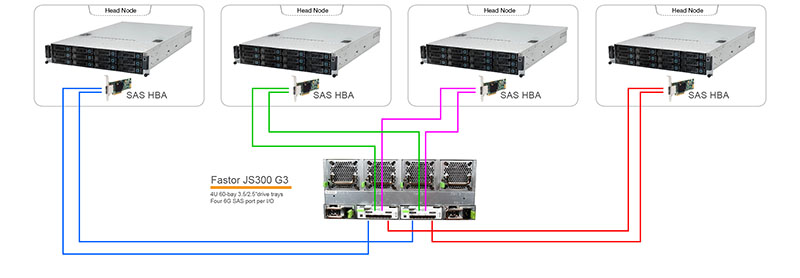
To begin, we recall that in the world of modern servers, disk shelves are used as an external disk subsystem. Connecting to servers can be quite flexible. For example, here are a few different non-trivial connection options.
As for the requirements for disk shelves, they are very different from the class of devices and as always entail a significant difference in price. We assign ETegro Fastor JS300 G3 to High-End disk shelves of the level, respectively, fulfilling the necessary requirements: the shelves have duplicated controllers and hot-swappable power supplies, do not have a single point of failure and have a powerful redundant ventilation system with the possibility of hot-swappable all modules.

From a distance, the shelf looks like a standard metal box, that is, it is not much different from other 4U high rack chassis. Near the view is more interesting - the design does not require the installation of a cover, which facilitates hot-swappable disks without fully extending the shelf from the rack. Most of the internal space of the case is occupied by 60 hard drives, which are located in 5 rows of 12 drives each. It is easy to calculate that the maximum capacity of one disk shelf when filling it with 4 TB drives is 240 TB, that is, almost a quarter of a petabyte.
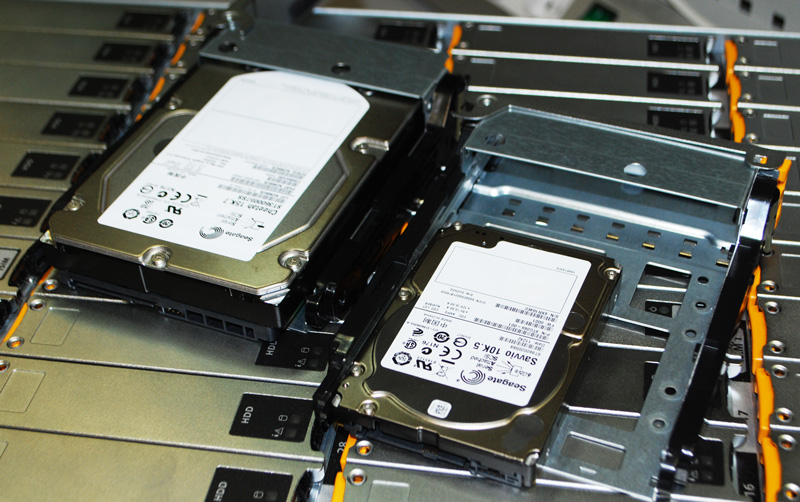
All drives are placed on a universal metal slide (trays), providing installation of both 3.5-inch and 2.5-inch drives, so if you really need a shelf on the SSD - no problem.
The absence of the top cover is a favorable design feature of the Fastor JS300 G3, what distinguishes it from other offers on the market. Instead of the cover, the top tray panels are made of metal and are equipped with an indication of the state of the disk. In this case, the indication is duplicated on the front panel. Those. everything is done for easy location and maintenance of disks in case of failure.
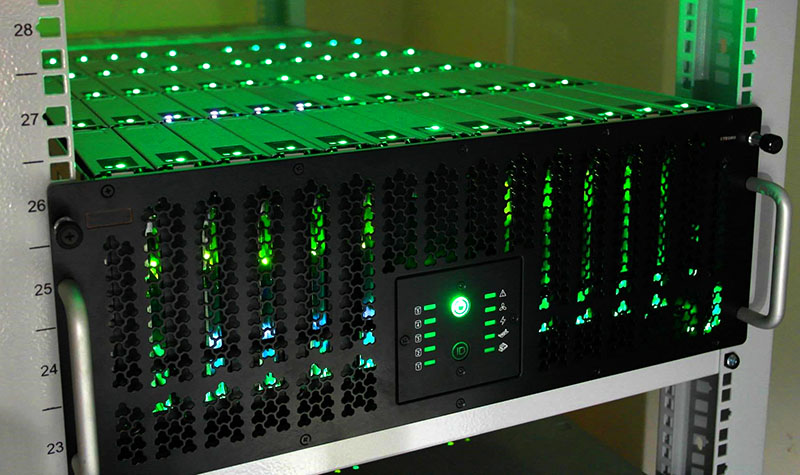
In the photo you can evaluate how the display of the shelf looks like in a dark room.
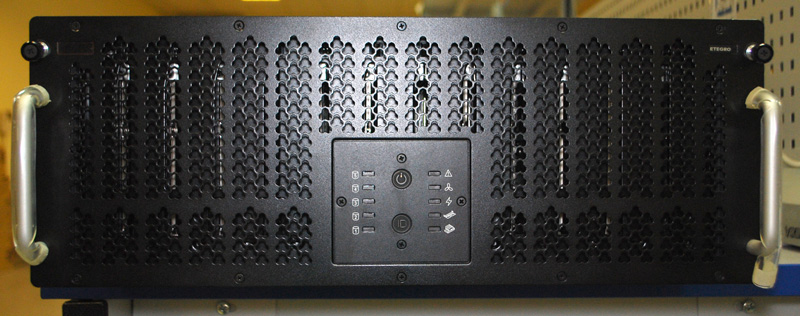
Since we started talking about the display, it is worth remembering about the appearance of the front panel of the shelf. Most of it is occupied by the cooling system grille, through which the disc indication is visible, and on a small island, there are two groups of 5 indicators. One of them displays the status of each of the five groups of 10 disks, while the second displays the status LEDs for the entire system, fans, power supplies, SIM and ISIM modules.

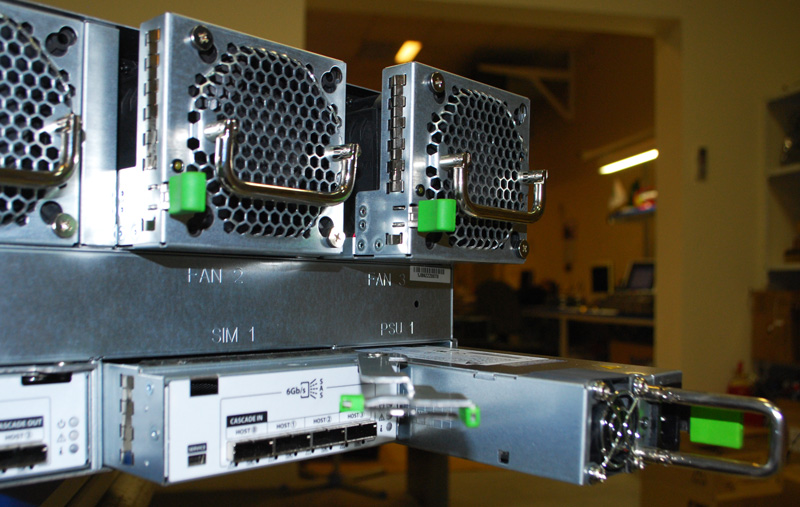
The back panel traditionally reveals the entire set of device components. In this case, we see the triumph of symmetry, indicating a high degree of duplication of shelf modules. Well, the characteristic handles very subtly hint that all modules support hot swapping. Below in the corners there is a pair of power supplies, 1400 W each, completely standard for all our products (and what to do, we and our customers like the word “interchangeability” as hell). Between them is a pair of SIM (SAS Interface Module) modules. They are responsible for duplicating the communication channel with the SAS server controller. The SAS version is, of course, 6 Gbps.
Especially attentive for certain paid attention to the inscriptions "cascade in" and "cascade out". Their existence is simply explained: two Fastor JS300 G3 shelves can be connected to a single server at once, the second one being connected in series to the first cascade out port. However, the two shelves can be divided between the two servers, then the “incoming” ports are the first and the third, and the second and the fourth become outgoing in each SIM module. If we use only one shelf, then it can be divided into four servers at once, making all SAS ports “inbound”.
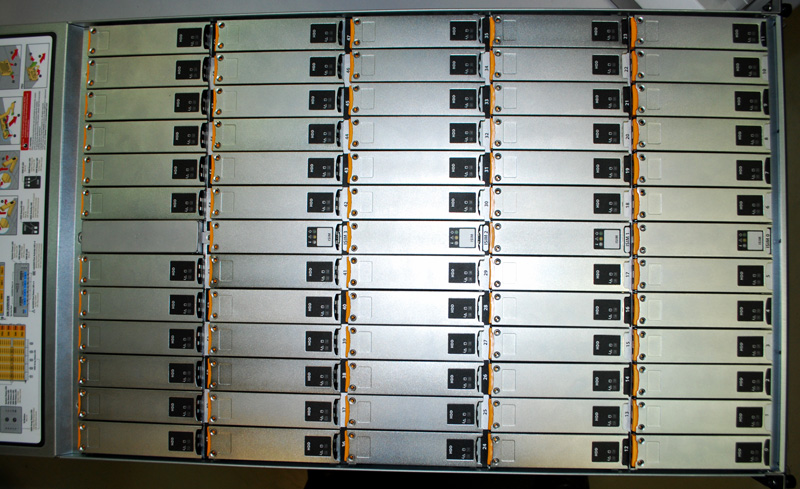
The structure of the controllers is complemented by 4 internal ISIM modules (Internal SAS Interface Module) to ensure complete fault tolerance of disk access. They are located inside the case in the center of the first four rows of disks. Like everything else, they support hot swap, have a status indication and an ID LED.
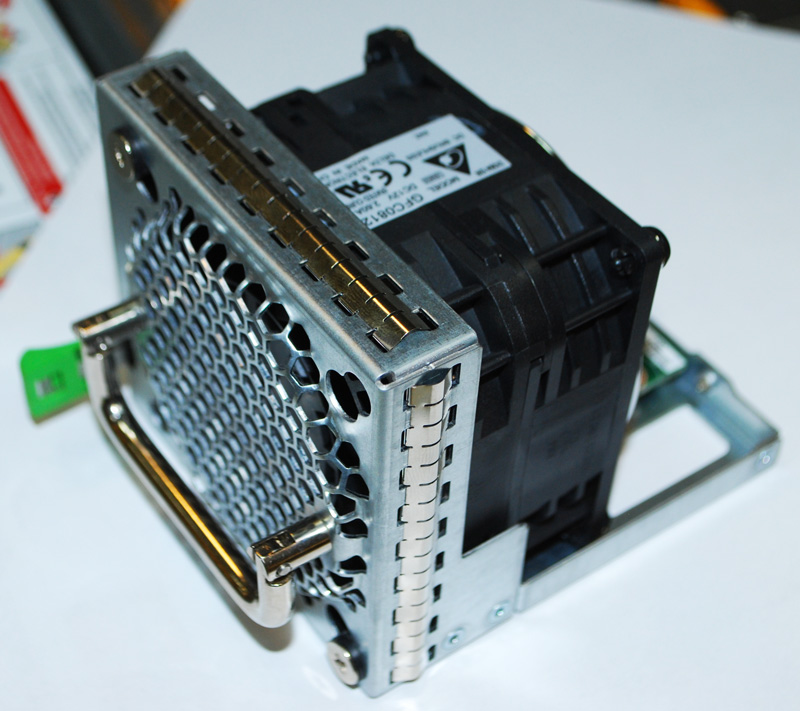
And do not forget the cooling system. It is very serious here, because 60 disks under serious load are a powerful source of heat. For cooling, there are 4 hot-plug fan modules, each of which combines two impressive fans.
Well, let's complete the review, we have already become the traditional invitation to ask questions in the comments. Welcome :)
Source: https://habr.com/ru/post/204200/
All Articles